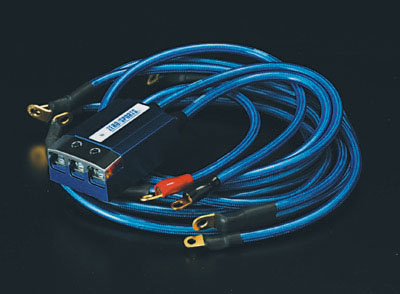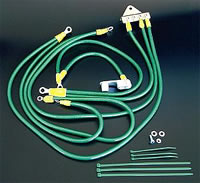Hey 3gress your under bonnet looking good ! Engine brace is brilliantly mounted to body so neatly.
I like to hark back to some basics about corrosion starting with the nobility of metals working what is sacrificial to what and how long in time that sacrifice would actually take, given the presence of strong oxidizing layers, voltage gradient, stray currents and chemical concentrations of inhibitors and water purity (presence of high PH mineral salt sodium and calcium hydroxides which love to
eat aluminium).
But more fun is a golden opportunity for some underbonnet bling in the process.

Imagine the under bonnet eye candy of a rats nest of
Earthing Cables loved by the Japs.




and even a
Polariser loved by the Aussies !


and now a sacrificial anode in the radiator cap loved by the Yanks !


Obviously all these things are good if they pass appropriate tests of significance. Otherwise they are a placebo or nice bling with internet bragging rights included in the price.
First up should there not be some kind of focus on what is failing, and
work the Problem starting with dumb questions rather than guessing Solutions as there can be many Solutions to a Problem, a few Solutions proving significant, while the myriad of other Solutions placebos.
Dumb questions might be, is the issue electrolysis from faulty circuit earth leakage rather than simply galvanic corrosion of dissimilar metals due to their relative nobility on Periodic Table ? Aluminium usually is protected by its oxide layer normally...what is happening to it and can it reform in the presence of oxidizing agents and in crevices ? The presence of refreshing oxygen in the coolant passing over the surfaces inside the radiator is probably a good thing. (Stagnant flow a bad thing.)
Now with electrical currents causing electrolysis than a sacrificial anode is sending zinc somewhere to complete the circuit isn't it ?....where ?...and what happens when the zinc runs out ?. Sounds dodgy if it needs anodes.
Speaking of zinc anodes, exposed aluminium dissolves in alkaline environments (high PH) whereas exposed zinc dissolves in acidic environments (low PH) What is the PH of the coolant proposed ? I imagine you might want a PH a touch lower than 7.2 for aluminium but that may not suit zinc. Mineral salts (Sodium and Calcium) in water used to mix coolant may be an issue for aluminium. Premix would be the answer to that I assume.
3gress, are such questions answered in your research so far on aluminium radiators vs zinc anodes vs stray currents ?

















